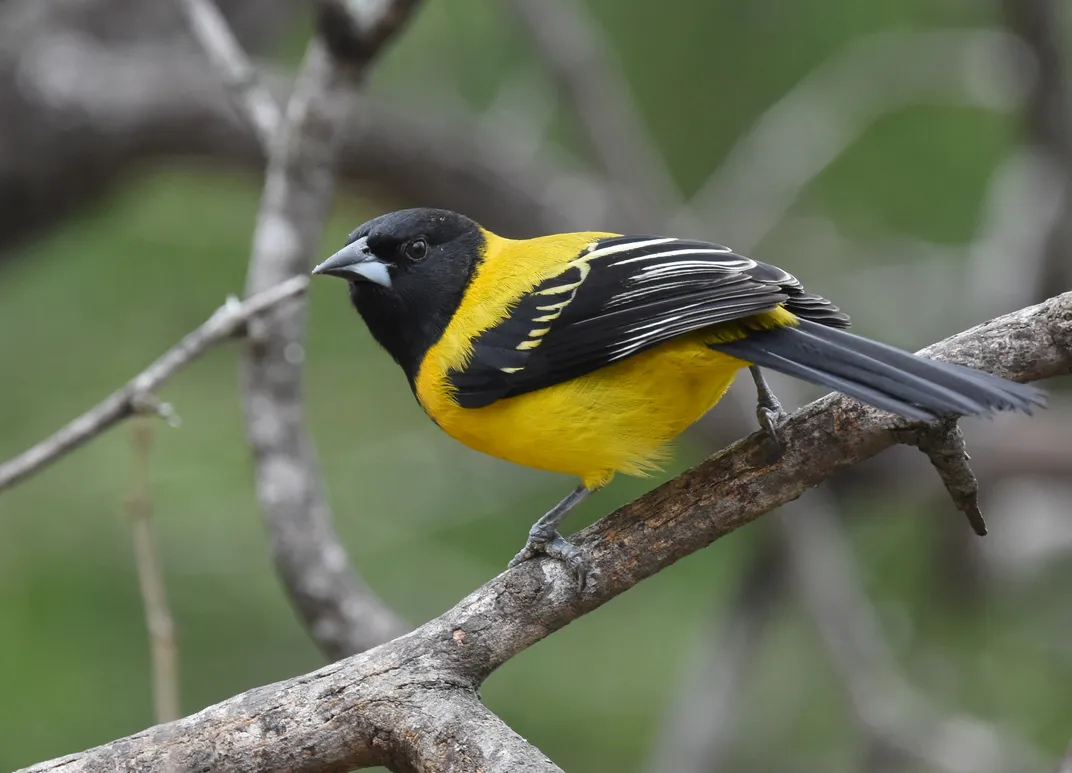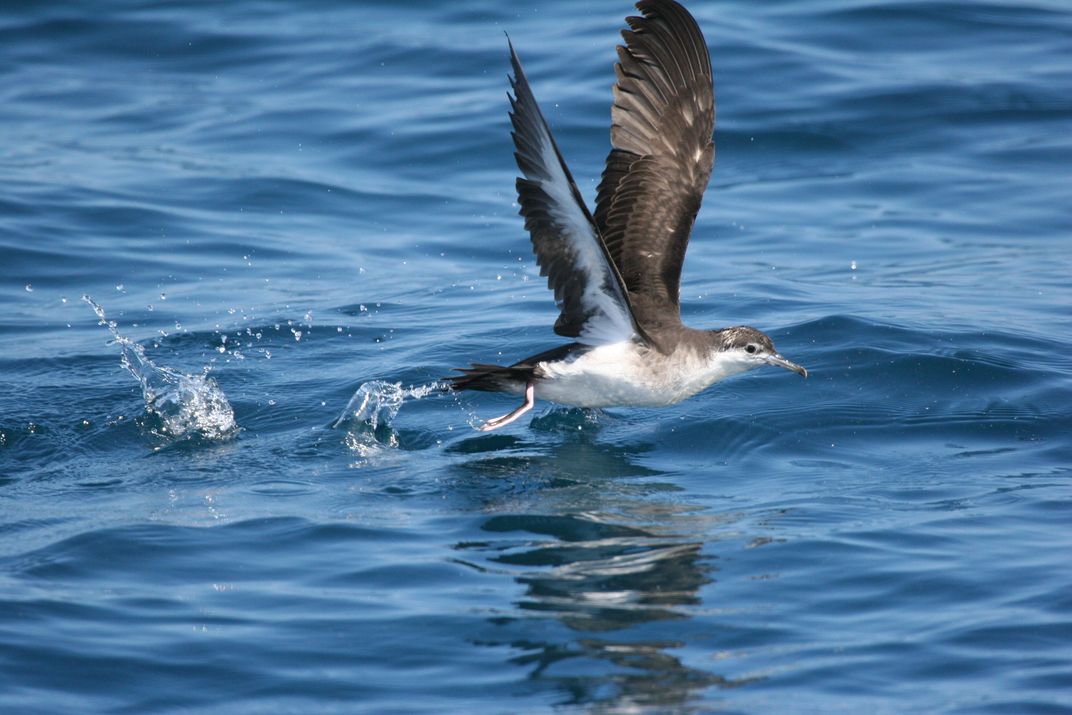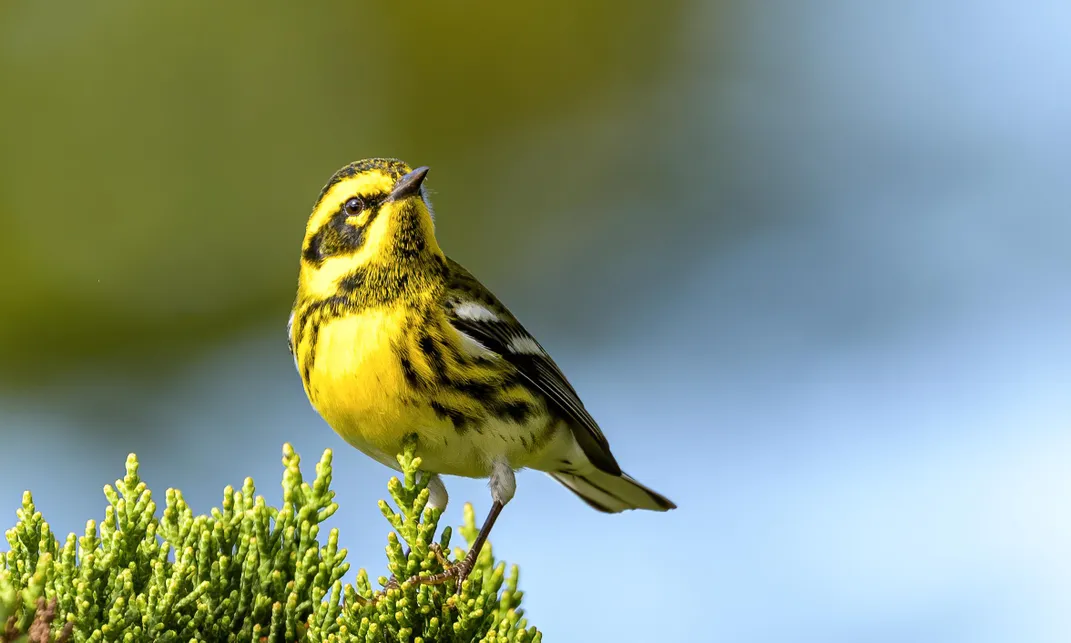A Bird Named for a Confederate General Sparks Calls for Change
McCown’s longspur has launched a renewed reckoning over the troubling histories reflected in taxonomy
/https://tf-cmsv2-smithsonianmag-media.s3.amazonaws.com/filer/25/d2/25d2ae4f-e3dc-430f-8bc8-7728c390c778/mccowns-longspur_skip-russell-profile-crop.jpg)
Across the United States, people are pushing for the removal of Confederate officers’ names from buildings, schools, and army bases, as protests against racial injustice continue in the wake of George Floyd’s death at the hands of Minneapolis police in May.
Something much smaller has also elicited debate over its Confederate name: McCown’s longspur, a bird that lives in the Great Plains and looks a bit like a sparrow. It was named after John Porter McCown, who was involved in forcible relocations of Native Americans during the 1840s, and who left the United States Army to serve as a Confederate general during the Civil War.
By memorializing someone who fought to defend slavery, the longspur’s name, some birders and scientists say, adds further barriers to inclusion in the world of bird researchers and enthusiasts — an overwhelmingly White community where people of color have repeatedly reported feeling ignored, excluded, and even deeply unsafe.
“Naming and language have power. The way that you use language tells people whether they belong or not,” said Earyn McGee, a Ph.D. student in conservation biology at the University of Arizona and an organizer of Black Birders Week, an online campaign to celebrate and increase visibility of Black birders and nature enthusiasts. When scientists refuse to stop using terms that are steeped in racism, she added, “that tells Black people and other people of color that they don’t matter, that they’re not important.”

Last year, the North American Classification Committee of the American Ornithological Society (AOS), passed on a chance to rename McCown’s longspur, citing the importance of maintaining stability in bird names. More recently, after Black Birders Week, the AOS proclaimed that it would be increasing efforts for inclusivity. Many birders and scientists say that these efforts should include renaming bird species saddled with names that are racist relics of the past. Their advocacy has spurred a petition and social media campaign, brought new scrutiny to the AOS naming procedures, and, in the process, launched debates about how scientific communities should reckon with the racist and colonial history embedded in nomenclature.
In response, the AOS has announced that it is revisiting the name of McCown’s longspur this summer. In a recent blog post, the organization expressed appreciation for “the outpouring of sentiment,” writing that the opposition to such names has “highlighted the need to address potential relics of systemic oppressions.”
“I’ve been an AOS member for two years now, and I think that this should be their utmost priority,” said Juita Martinez, a Ph.D. student at the University of Louisiana at Lafayette and a fellow Black Birders Week organizer. “Multiple people in high-up positions in neighboring ornithological groups have spoken out with their thoughts and have given really, really great solutions to this problem. So, they really have no excuse for not changing these names.”
Ornithology is not the only field confronting these issues. The names of various animals, plants, and natural features have faced criticism over the years, including a beetle named for Hitler; a lizard named for surveyor Howard Stansbury, who was involved in massacring people of the Timpanogos Nation in Utah; and a lily with a common name containing a deeply offensive racial slur.
Species receive a Latinized scientific name (e.g. Felis catus) as well as a common name (e.g. domestic cat). Among birders, naming rights have historically gone to the scientist who “discovered” a species — meaning the first person to publish a description in a scientific journal. Those researchers often named birds in honor of another naturalist, or after the person who collected the bird. McCown, for example, shot his eponymous longspur in 1851 and sent the specimen to an amateur naturalist, who then described it in a scientific journal and named it in his honor.
The dustup over the longspur’s name began in 2018, when Robert Driver, a graduate student studying birds at East Carolina University in Greenville, North Carolina, submitted a proposal to the North American Classification Committee (NACC) of the AOS to change the bird’s name, citing McCown’s position in the Confederate Army. McCown, Driver wrote, “fought for the right of states to preserve slavery.” All researchers, he argued, “should be able to conduct future research on any bird without feeling excluded, uncomfortable, or shame when they hear or say the name of the bird.”

The NACC maintains the “Checklist of North American Birds,” an authoritative catalog that is widely used by ornithologists, birders, museum curators, field guide writers, and government officials. A “taxonomic philosophy,” outlined in the preface to the checklist, explains that the NACC will “avoid hasty declarations that risk quick reversal” and follow “the time-honored tradition of previous committees” in being “conservative and cautious” when judging new proposals.
The nine-person committee rejected Driver’s proposal by a vote of seven to one, with one abstention. In anonymous written responses, several committee members argued that the group should favor “stability in names” as much as possible, reflecting the checklist’s taxonomic philosophy. Some worried about making the change without having a clear policy in place for other ethically fraught names. “It is widely known that judging historical figures by current moral standards is problematic, unfair to some degree, and rarely black-and-white,” one wrote.
Others questioned whether renaming birds was the best way to promote inclusion: “While I fully appreciate and promote our need to increase diversity in the sciences, in my view this is not a particularly effective way to do so,” another committee member wrote.
Some comments argued that McCown’s contributions to ornithology deserved recognition, and one pointed to his later disavowal of the Confederacy as “a damned stinking cotton oligarchy.” One committee member’s remarks also suggested that serving in the Confederate Army simply wasn’t that bad. “In the case of McCown, the only negative I really see for him is that he chose to go with the Confederates rather than the Union when the Civil War broke out,” the member wrote. “But I see no evidence he was involved with slavery.” (Decades of historical work have documented that the Confederate Army primarily existed to defend the institution of slavery.)
The NACC membership is all White. An AOS spokesperson confirmed to Undark that the committee did not consult any Black scientists before making its ruling.
Many birders found the committee’s arguments unconvincing. Regarding stability, McGee said, “the idea that we should do things a certain way because that’s how they’ve always been done isn’t a good enough excuse.”
Sara Lipshutz, a postdoctoral fellow in biology at Indiana University Bloomington, wrote in an email to Undark that she was frustrated with the value placed on stability. “Yes, it is confusing to learn new bird names, and would take more money and energy to make new field guides,” she wrote. “But this already happens when we learn new genetic information leading to species being split or collapsed. To me, changing names is worth it, if it means a more inclusive birding community.”
Many in the birding community also questioned the assertion that renaming the bird was an ineffective way to promote inclusion. Jason Ward, host of the documentary series “Birds of North America” and founder of the group Black AF in STEM, an online community of Black scientists, said that birding “is not really the most accessible hobby, for a lot of different reasons,” including the cost of gear like binoculars and cameras and accessibility of green spaces. “I don’t think we should make that road even tougher by having names that evoke bad memories or horrible times in our country.”
Driver’s longspur proposal did instigate some changes. In 2019, after the ruling, NACC developed a new naming policy, in consultation with the AOS Committee on Diversity and Inclusion, in which they acknowledged the possibility of changing offensive names. The policy states that a name could be changed because of the namesake’s involvement in “reprehensible events” and that “the committee strives to strike a balance that recognizes the principle of nomenclatural stability while respecting circumstances in which names should be reconsidered to reflect present-day ethical principles or to avoid ongoing harm.”
When nationwide protests against racial injustice began this May, though, the longspur still had its name. A petition calling for the renaming of McCown’s longspur and other species, led by birders Jordan Rutter and Gabriel Foley with the help of others in the birding community, soon collected hundreds of signatures. The #BirdNamesForBirds Twitter campaign drew additional attention to honorifics associated with racism and colonialism.
On June 30, the AOS announced that it was preparing to reevaluate the name of the longspur. Members of the NACC, the AOS leadership team, and the AOS diversity and inclusion committee did not respond to interview requests from Undark, but, in an emailed statement provided on behalf of the NACC, Christine Schmidt, a spokesperson for AOS, explained that this decision had been “motivated by a change in social perception on racial issues, particularly in recent weeks.”
“Regardless of McCown's ornithological accomplishments and the fact that the bird name predates the Confederacy, to many, McCown is perceived as a symbol of slavery and racism for the simple reason that he resigned his officer's commission in the U.S. Army to fight for the Confederacy,” the NACC explained in their statement. “This perception feels more important now than it did even six weeks ago, let alone in 2018.”

Many birders and researchers believe that renaming shouldn’t be limited to the longspur. In interviews with Undark, Martinez, Driver, and others pointed out that McCown is certainly not the only figure associated with racist violence whose memory is honored by a bird name.
The Townsend’s warbler, for example, is a pleasantly round-looking bird with a black and yellow face, named for the 19th century American naturalist John Kirk Townsend, as is another bird, the Townsend’s solitaire. “It’s very well documented that he robbed the graves of Native American tribes,” says Martinez. The pioneering birder John Audubon, whose legacy is memorialized in two bird names and by the National Audubon Society, also raided Native American graves, Martinez points out. “So, if you’re going to change the McCown’s, you need to change the Townsend’s, the Audubon’s — he was trafficking human remains as well. Changing one name does not solve the whole problem.”
Other bird experts have questioned the very practice of naming North American birds after the White men who supposedly “discovered” them. “The whole act of naming [an organism] after a person — this happens obviously outside birds, too — it’s inherently a really colonial act,” says Jess McLaughlin, a Ph.D. student studying neotropical birds at the University of Oklahoma. “In a way, it’s implicitly being like ‘the most important thing for you to know about a bird is that this White guy saw it.’” But, McLaughlin said, many people already “had an intimate knowledge of these birds.”
McLaughlin and some other researchers suggest that birds shouldn’t be named after people at all. “The landscape of birding is changing,” says Ward. “Why not change these bird names as well? I say throw them all out the window and rename all the birds named after old dead White ornithologists.”
Instead, Ward points out that many birds are named after their behaviors, their preferred habitat, or physical features, and these characteristics could be used to rename birds like the longspur as well. “[McCown’s longspur] is common in the Great Plains, so we could call this bird the prairie longspur,” says Ward. “If you look at the bird, it also has a beautiful red-colored, chestnut-colored patch on its wings. Birders have so many different names for red. So, we could call this bird the rufous-winged longspur or the chestnut-winged longspur.”
McLaughlin says another option would be to use Indigenous names, noting that in some places, including Hawaii and New Zealand, birds have common names that are in Indigenous languages, not English.
There are signs that naming conventions are changing — among bird people, and in scientific and geographic classification more broadly. In 2015, ornithologists in Sweden officially renamed several birds whose original names had racist connotations. Across Canada, First Nation names for natural features like rivers are being restored. After 40 years of efforts, Mt. McKinley was officially restored to its Alaska Native name Denali in 2015.
Many birders hope they will not have to wait 40 years for McCown’s longspur to get a new name. An AOS spokesperson said the committee will announce its decision on renaming later this month or in early August. The committee indicated that it would consider any future name changes on a case-by-case basis. They will likely do so under continued pressure from many birders, who in the past have been disappointed by what they see as a lukewarm response from the NACC.
Those kinds of scientific names are “ignoring other people’s lived experiences and culture and ignoring the historical background of this country,” says McGee. “It’s important to make sure that the way we say things and what we call things is inclusive to everybody.”
Hannah Thomasy is a freelance science writer splitting time between Toronto and Seattle. Her work has appeared in Hakai Magazine, OneZero, and NPR.
This article was originally published on Undark. Read the original article.